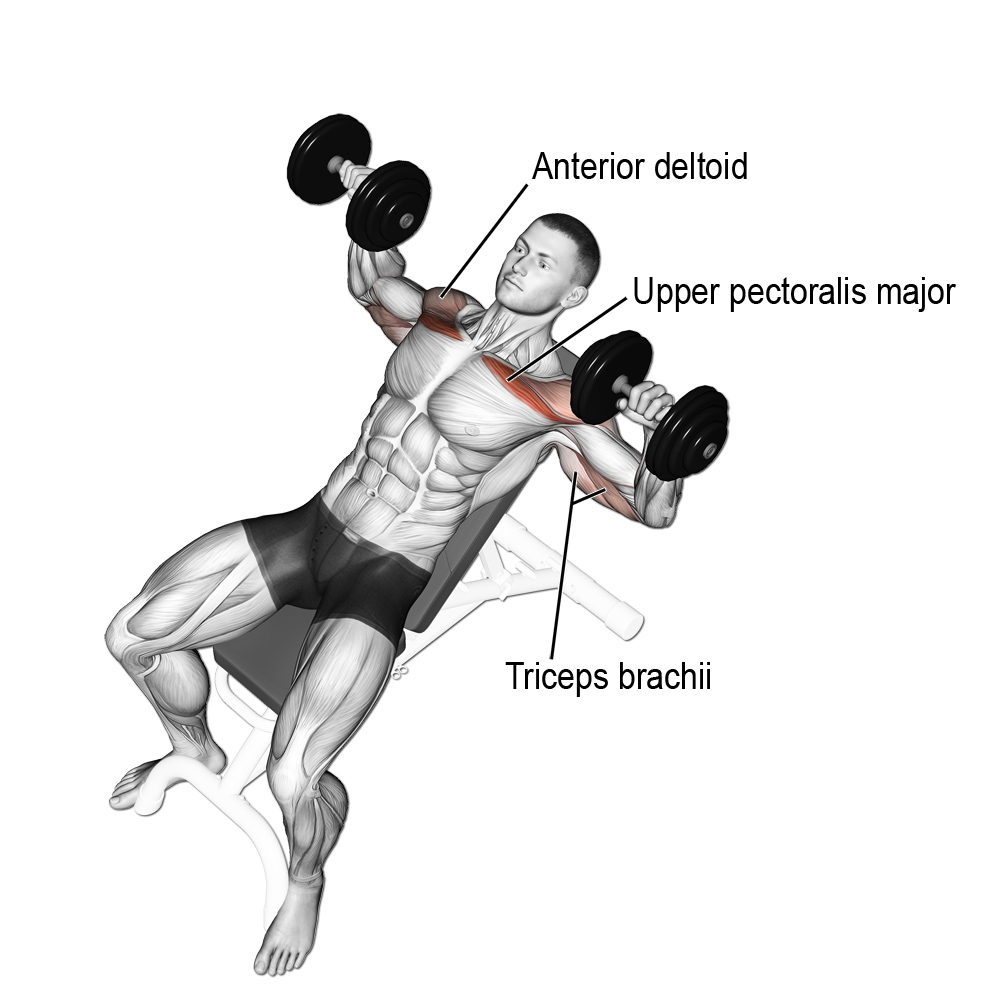Incline Dumbbell Press
What’s so special about incline dumbbell press?
Incline dumbbell press has to be one of my favourite accessory exercises when it comes to chest training. I always seem to get a great pump after the exercise. Why is it so special?
To start with, it helps you to improve your shoulder stability as well as correct muscle imbalances in your bench press. For example, if your right arm is stronger than your left arm (for some strange reason), you would be able to notice it straight away, lower the weight and train with the lower weight until you fix the problem.
How to do it correctly?
Similar to incline barbell bench press, set up your bench at around 30-45-degree angle. Anything over that will activate your shoulder and anything under will shift the load and activate the remaining of the chest. Don’t forget to lift the seat pad up as it will help you not to slide off the bench.
Once you have found your most comfortable position, grab a pair of light dumbbells. If you have never done this exercise, you will struggle to stabilize the dumbbells and they will be all over the place. Let’s go for a safer and smarter option by choosing low weights.

First, sit in an upright position. Lift the dumbbells from the ground and place them on your thighs, unless of course, you can bicep curl them and then put them on your chest. But if you are mortal like me, you will place the flat ends on your thighs and then lay down and, voilà, you are ready to lift.
It is going to be a bit different because you will start the very first lift from the bottom of the movement. Make sure that your arms are bent at your elbow at a 90-degree angle and your elbows are tucked in (but not too much) just like the barbell press in a vertical line. When you are finishing up the lift bring the dumbbells together (make ends meet), but don’t smash them together.

Is there any variation?
There are a few things you can do to add some variation to the incline dumbbell press.
One of them would be twisting the dumbbells and squeezing them at the top. It would allow you to have a much better contraction compared to the traditional incline dumbbell press. The extra contraction makes small tears in the muscles and leads to more muscle growth.
Personally, I like to trace a circle with the dumbbells. I lower them a bit wider than I am supposed to and bring them back together like a circle. This allows me to stretch the chest a bit more and with a twist and squeeze at the top, I get to go through all the range of motion of my upper chest.
What are the dangers involved?
If performed with correct form, the incline dumbbell bench press is perfectly safe. Like most exercises, it is just when you use a weight that is too heavy for you that things can go wrong.
Always warm up. If you warm up properly, you will reduce the risk of tearing your pec significantly. You can tear a pec by lifting a dumbbell that is too heavy before you warm up.
Start light, then progress up to your working sets over two or four warm-up sets. If it is your first exercise, do four warm-ups. If you are already into your workout, you might only need two or three.
Probably one of the most common mistakes people make is dropping dumbbells after they have finished the set. The last thing your rotator cuff needs is a jerky movement at the end of the exercise. Not only are you risking your safety, but also that of the people around you.
Try reclining and placing the dumbbells back on your thighs and then to the ground. Unless, of course, you have a spotter.
